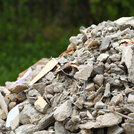This web-based tool estimates and compares greenhouse gas (GHG) and energy use reductions for different waste management practices in a baseline and an alternate scenario. It is intended to support voluntary GHG measurement and reporting initiatives. The tool works for common household and construction materials including glass, steel, lumber, plastics, bricks, concrete, asphalt, food waste, yard trimmings, and mixed organics. Inputs for each material are: tons recycled, landfilled, composted, and source reduced for the baseline and alternate scenarios. The user also has the option to adjust the model for landfill and waste transport characteristics. Results are given in Metric Tons of Carbon Dioxide Equivalent (MTCO2E), Metric Tons of Carbon Equivalent (MTCE), or BTUs of energy.
Help build the LPS: Find out how to submit a case study and other ways to contribute.

